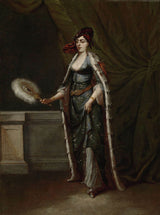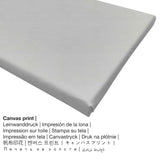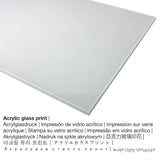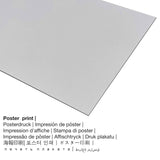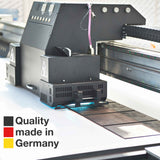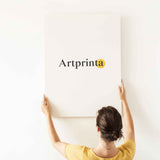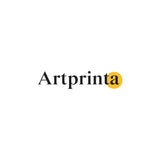Jean Baptiste Vanmour, 1720 - Nwanyị Turkey - mbipụta nka mara mma
Ụtụ gụnyere. Mbupu gbakọrọ na ndenye ọpụpụ.
Ihe ndị a na-ahọrọ
Maka ngwaahịa ọ bụla anyị na-enye ihe dị iche iche & nha. Nhọrọ ndị a dị maka n'otu n'otu:
- Mbipụta kanvas: The canvas print, not to be confused with an artwork painted on a canvas, is a digital replica printed on a UV direct printing machine. It creates the plastic impression of three dimensionality. Your canvas of this masterpiece will let you turn your own art print into a large size work of art as you would see in a gallery. Hanging your canvas print: A canvas print has the advantage of being relatively low in weight, which implies that it is easy to hang your Canvas print without the support of additional wall-mounts. Hence, canvas prints are suited for any type of wall.
- Akwụkwọ mmado ebipụtara (akwa akwa akwa): Our poster is a UV printed flat cotton canvas paper with a nice structure on the surface. A poster is particularly suited for putting your art print in a customized frame. Please keep in mind, that depending on the size of the canvas poster print we add a white margin of something between 2-6cm round about the painting to facilitate the framing.
- Mbipụta aluminom (aluminium dibbond): This is a metal print made on aluminium dibond material with an impressive depth effect, which creates a contemporary impression thanks to a non-reflective surface structure. A direct Aluminium Dibond Print is the best start to art prints made with aluminum. The colors of the print are bright and vivid, the fine details are crisp, and you can notice a matte appearance of the surface.
- Mbipụta iko acrylic (nke nwere ezigbo mkpuchi iko): The print on acrylic glass, which is often referenced as a UV print on plexiglass, transforms your favorite original artwork into lovely wall décor. Additionally, it forms a viable alternative option to aluminium and canvas fine art replicas. The great benefit of an acrylic glass art print is that contrasts and granular painting details become exposed because of the subtle tonal gradation in the print.
Nkwupụta iwu: We try all that we can to describe our art products as accurate as possible and to exhibit them visually. At the same time, the pigments of the printed materials and the print result can diverge slightly from the image on the screen. Depending on your settings of your screen and the condition of the surface, colors might not be printed as exactly as the digital version. Because the fine art prints are printed and processed manually, there may as well be minor discrepancies in the size and exact position of the motif.
Nkọwapụta nka nka izizi si Rijksmuseum (© - Rijksmuseum - Rijksmuseum)
This poised lady may have been the mistress of Ambassador Calkoen. Her clothing is very elegant and stylish; the low neckline was fashionable during the Tulip Era.
Ama
a 18th narị afọ mpempe nka A Turkish Woman bụ onye omenkà kere ya Jean Baptiste Vanmour. The artpiece bụ nke art collection nke Rijksmuseum in Amsterdam, Netherlands. We are happy to state that this public domain work of art is being supplied with courtesy of Rijksmuseum.Ihe kredit nke ọrụ nka bụ: . Ọzọkwa, nhazi nke mmepụta dijitalụ dị n'ime Eserese format ya na oke nke 3: 4, nke pụtara na ogologo bụ 25% mkpụmkpụ karịa obosara.
Nkọwa na ọrụ nka pụrụ iche
| Aha nka: | "A Turkish Woman" |
| nhazi ọkwa: | sere |
| Okwu mkpokọta: | nka ochie |
| Century: | 18th narị afọ |
| Afọ nka: | 1720 |
| Afọ nka: | 300 afọ |
| Ụlọ ihe ngosi nka: | Rijksmuseum |
| Ebe ngosi nka: | Amsterdam, Netherlands |
| Weebụsaịtị nke ihe ngosi nka: | www.rijksmuseum.nl |
| Akwụkwọ ikike nka: | ngalaba ọha |
| Site n'aka: | Rijksmuseum |
Banyere akụkọ
| Nkewa edemede: | ọrụ mgbidi |
| Usoro mmeghari: | dijitalụ mmeputakwa |
| Usoro mmepụta: | Mbipụta UV ozugbo (mbipụta dijitalụ) |
| Mmalite nke ngwaahịa a: | emere na Germany |
| Stockdị ngwaahịa: | mmepụta ihe na-achọ |
| Ngwaahịa were: | foto mgbidi, ihe ndozi mgbidi |
| Ndepụta: | nhazi ihe osise |
| Njikwa oyiyi: | 3:4- (ogologo: obosara) |
| Nsonaazụ: | ogologo bụ 25% mkpụmkpụ karịa obosara |
| Ihe mmeputakwa dị: | akwụkwọ mmado (akwụkwọ kwaaji), mbipụta ọla (aluminium dibond), mbipụta iko acrylic (nke nwere ezigbo mkpuchi iko), mbipụta akwụkwọ. |
| Mbipụta kanvas (akwa akwa na etiti ihe ndọtị): | 30x40cm - 12x16", 60x80cm - 24x31", 90x120cm - 35x47", 120x160cm - 47x63" |
| Mbipụta iko acrylic (nke nwere ezigbo mkpuchi iko): | 30x40cm - 12x16", 60x80cm - 24x31", 90x120cm - 35x47", 120x160cm - 47x63" |
| Mpempe akwụkwọ mmado (akwụkwọ kwaaji) nha dị iche iche: | 30x40cm - 12x16", 60x80cm - 24x31", 90x120cm - 35x47" |
| Nha ebipụta aluminium dibond: | 30x40cm - 12x16", 60x80cm - 24x31", 90x120cm - 35x47" |
| ụba: | biko buru n'uche na emebeghi mmeputakwa a |
Tebụl onye na-ese ihe
| Aha onye nka: | Jean Baptiste Vanmour |
| Aliases: | Vanmour, Moor Jean-Baptiste van, Vanmour Jean-Baptiste, J.B. van Moor, Jean Baptiste Van Mour, Vanmour Jean Baptiste, Mour, Jean-Baptiste van Mour, Jan Baptista van Mour, Van Mour Jean Baptiste, Van Moor Jean Baptiste, Mour Jean Baptiste van, Jean Baptiste Vanmour, Van Mour Jean-Baptiste, Mour Jean-Baptiste van, Van-Mour, Van Moor Jean-Baptiste |
| okike nke onye nka: | nwoke |
| Obodo onye nka: | French |
| Ọrụ nke onye na-ese ihe: | onye na-ese ihe |
| Country: | France |
| nhazi ọkwa: | nna ukwu ochie |
| Nwụrụ na afọ nke: | 66 afọ |
| Afọ ọmụmụ: | 1671 |
| Obodo amụrụ: | Valenciennes, Hauts-de-France, France |
| Nwụrụ n'afọ: | 1737 |
| Nwuru na (ebe): | Istanbul, Istanbul, Turkey |
© Nwebiisinka nke - Artprinta.com

